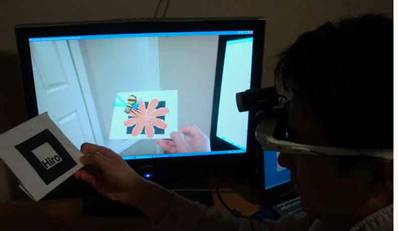Design team members: Mohamed Farid, Joanna Hamley, Jimmy Xu
Supervisor: Justin Eichel
Background
With the advent of more complex systems, people are expected to carry out highly complex tasks which they may not fully remember. In many cases, this challenge is mitigated with large instruction manuals and diagrams. However, many people have complained that following these manuals can be time consuming, ambiguous and disconnected from reality. This often leads to errors and user dissatisfaction.
To overcome these limitations, our project proposes the use of Augmented Reality (AR) to guide users through complex tasks. AR allows users to see computer generated visuals that are merged onto the real world. This allows digital information to be embedded onto real life objects, providing users with more information that is easily accessible. This technology can be used to help anyone carry out unfamiliar tasks from changing a car tires to performing complex tasks aboard the International Space Station. To learn more about augmented reality, watch this short video on augmented reality.
Project description
Experts believe a growing number of North American drivers do not know how to change vehicle tires. AAA roadside assistance has changed over 900,000 tires in 2003. The goal of this project is to create an augmented reality based tutorial system to guide users through the process of changing vehicle tires. AR will provide users with visual step-by-step instructions that are overlaid on the tire to be changed. The user will perceive and view the world through a camera and a head-mounted display. This can be used to help users with no prior knowledge/experience to confidently make change a vehicle tire when required.

Design methodology
The augmented reality training system is divided into three key components – image recognition and registration, visualization and user interface. Image recognition and registration involves recognizing the relevant positions of vehicle elements related to a tire change. Some of these components include the wheel hub, tire and lug nuts. The visualization component allows relevant animations to be displayed on the actual vehicle element from the prospective of the user through a head-mounted display. These animations visually show the user the actions that need to be performed in the real world. This helps to eliminate ambiguity and confusion about the steps that the user needs to perform. Finally, the system’s user interface will be designed such that it is intuitive and easy to use. The user interface will allow users to navigate the tutorial as best suits their level of experience